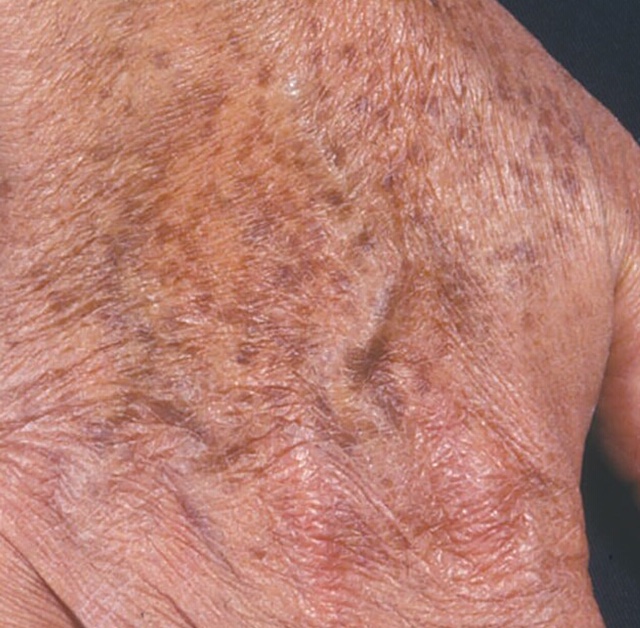Sun spots
some people may choose to treat them for cosmetic reasons or to improve their self-esteem !!
Sunspots are flat rounded dark coloured spots that may appear on the face or other areas of sun-exposed skin. Sun spots are also called age spots, liver spots or solar lentigines.
Sun spots may affect all skin types and are very common in adults older than 50, especially with lighter skin, but younger people also can get them if they spend more time in the sun. Although sunspots are harmless and non-cancerous, some people may choose to treat them for cosmetic reasons or to improve their self-esteem.
Causes
The sun emits ultraviolet (UV) radiation that stimulates the production of skin cells called melanocytes. Melanocytes produce a substance called melanin, which gives the skin its color. When there is a disruption to melanin production, people may develop overpigmented (hyperpigmented) or underpigmented (hypopigmented) areas of skin. Sunspots are hyperpigmented skin blemishes.
The enzyme tyrosinase is a key factor in the production of melanin and overactivity of tyrosinase may cause hyperpigmentation or sunspots. Overactivity of this enzyme can also occur as a result of aging. According to the American Society for Dermatologic Surgery (ASDS), some people may also have a genetic risk for developing sunspots.
Sunspots are most likely to develop in the following areas:
- Hands
- Arms
- Shoulders
- Back
- Feet
Symptoms of Sun spots :
- Looks like flat oval areas of increased pigmentation.
- Are usually tan to dark brown.
- Occur on skin that has had the most sun exposure over the years, such as the backs of hands, tops of feet, face, shoulders and upper back.
- Range from freckle size to about 1/2 inch (13 millimeters).
- Can group together, making them more noticeable.

Sun spots on the hand
When to see a doctor
It’s best to have any new skin changes evaluated by a doctor, especially if a spot is black, increasing in size, has an irregular border or having an unusual combination of colors or if any bleeding is noticed.
Treatments
Doctors can treat sunspots by slowing down or stopping the activity of the tyrosinase enzyme. Two types of treatment are usually available for sunspots on the face: madical treatment in the form topical creams and dermatologic procedures.
Topical creams
Several creams contain ingredients that inhibit the activity of tyrosinase enzyme and reduce the appearance of sunspots.
Dermatologic techniques
- MICRO-DERMABRASION
- CHEMICAL PEELS
- CRYOSURGERY
- LASER THERAPY
- INTENSE PULSED LIGHT
You can help prevent sun spots by regularly using sunscreen and avoiding the sun.
